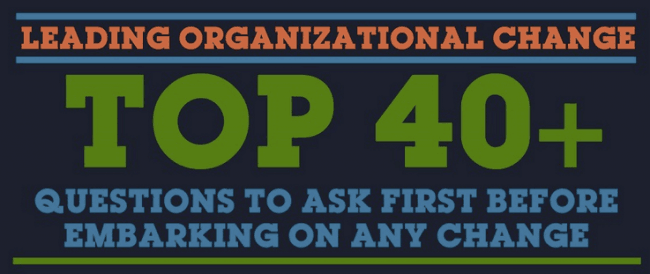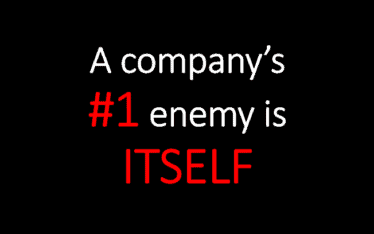Communication is key to execute a change management project. Believing that your team will implement change without fully understanding the objectives or the reasons for the change will lead to failure.
How to prepare an organization for change? What questions to ask before embarking on any organizational change:
Top 40+ questions to ask first before embarking on any change
Here are 10 tips for communicating effectively and giving your change project the best chance of success.
#1 – Long distance communication
Don’t use long distance communication. Step up, in front of your workforce, to tell your story. Don’t use impersonal means of communication in the first place, like e-mail, to communicate your project. It will only enforce resistance.
#2 – Proactive
Communication should be proactive. If the rumor mill is already in action, the organization has waited too long to communicate.
#3 – Conversation
Recognize that true communication is a “conversation.” It is two-way and real discussion must result. It cannot be just a presentation.
#4 – Provide answers
Provide answers to questions only if you know the answer. Leaders destroy their credibility when they provide incorrect information or appear to stumble or back-peddle, when providing an answer. It is much better to say you don’t know, and that you will try to find out.
#5 – Build a story
Build a story about what you believe, and what inspired the change decision. Tell everyone exactly how you came to the idea of the change. Start with the situation that doesn’t work anymore and move to the situation you believe will work. Tell them exactly why you know it will improve the business. End your story with the benefits they will experience once the change is complete.
#6 – Storytelling
Employees emotions are where the momentum for real transformation ultimately lies. Here is brilliant example of the use of video as a storytelling tool – the trailer of the movie, Prometheus: “If you’ll indulge me, I’d like to change the World”. Stories make people think much more and they also stick better in memory.
#7 – Words
Words have much more weight than you may realize. Watch this extremely good video about the importance of how you communicate things.
#8 – Visual aids to support the story
Use strong visual aids to support your story like pictures and video, if possible. Use blank templates with photos and leave your bullet points at home. Words simply make people read your slides instead of listening to you.
#9 – Multiple platforms or media
The key to communicating is to use multiple platforms or media to communicate the same message. And you will probably have to communicate the same message three to six times, before the message is heard and understood.
Infographic: Top 10 ways social media can facilitate change management
Communicate consistently, frequently, and through multiple channels, including speaking, writing, video, training, focus groups, bulletin boards, Intranets, social media and more about the change.
#10 – Interactive workshops and forums
Hold interactive workshops and forums in which all employees can explore the changes together, while learning more. Use training as a form of interactive communication and as an opportunity for people to safely explore new behaviors and ideas about change and change management. All levels of the organization must participate in the same sessions.
#11 – Network
Provide opportunities for people to network with each other, both formally and informally, to share ideas about change and change management.
Short URL & title:
Top 10+ tips to improve change management communication — http://www.torbenrick.eu/t/r/caf
Share it:
If you enjoyed this article, please take 5 seconds to share it on your social network. Thanks!










Another great list Rick! Straight to the point and useful.
I’ve seen each of your examples in the field…
One area that I have found a renewed need to address is the follow through on communication. Leaders insist that they don’t have the time to get it all done. We’ve been working to turn that tide with clear prioritization of this work and basic time management.
It takes discipline to do the things you suggest here… but they are necessary to keep the lines of communication open. And that follow-through takes prioritized effort.
-Steve
Good morning Torben,
I really enjoyed reading your latest blog on change management. I was particularly taken by the video about the blind man and the power of words to change perception.
Thank you
Chris